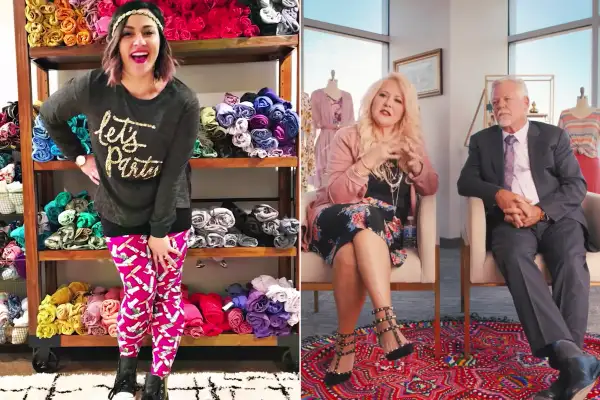Here's How Much Money Sellers for MLMs Like LuLaRoe Actually Make

Everyone is talking about LuLaRich, the new Amazon documentary about multilevel marketing firm and notorious leggings-seller LuLaRoe.
The four-part docuseries tells the story of DeAnne Stidham, who started the company in 2012 and built it up, initially charging people $5,000 just to join. Consultants — many of them women — then got shipments of leggings and other clothes to sell to friends and acquaintances at a markup.
Despite reports of moldy clothing and lawsuits, the company pushed on. Sellers, some of whom the film claims went as far as selling their breast milk in order to pay LuLaRoe’s startup fees, could increase their monthly earnings by bringing more contractors into the fold.
Whether or not you've already binged the show, LuLaRoe's premise may sound familiar to anyone who's had a friend or family member try to sell them Herbalife supplements or hair products from Monat. Multilevel marketing schemes, or MLMs, had more than 18 million sellers in 2014. They're all over the internet, but they often face legal challenges — and rarely result in a big payday.
How many people actually make money in multilevel marketing (MLM) schemes?
The numbers speak for themselves: For most, these schemes are poor financial investments.
Although multilevel marketing schemes can be profitable, they mostly benefit people at the top. A whopping 99% of participants in MLM schemes don’t make any money or even go into the red, according to a study from the Consumer Awareness Institute from 2011. A 2018 study from AARP put that number closer to 73%.
LuLaRoe had 26,000 contractors in July 2016. If the 99% statistic holds true, that means as few as 260 of those people made a profit that year. But the company managed to obscure that in its financial reports.
According to LuLaRoe’s 2020 income statement, the median gross profit of retailers was $1,444 in 2020, not including “non-product” expenses, which could include storage bins, shipping costs, printers, home office space and other items essential to participating in the program. Those can easily make a dent in what amounts to a median monthly profit of $120.
Though LuLaRoe attracted consultants with promises of profits and camaraderie, it appears many sellers have been adversely affected by selling for LuLaRoe. A Truth in Advertising investigation found more than 100 LuLaRoe contractors filed for bankruptcy between 2016 and 2019. One woman in the LuLaRich trailer can be heard saying she’s going to lose her house.
To protect yourself and your loved ones from a similar fare, the Federal Trade Commission (FTC) recommends closely examining any multilevel marketing company you're considering joining to make sure you aren't joining an illegal pyramid scheme. There are some telltale signs: If you're seeing "extravagant promises about your earning potential," noticing the use of "high-pressure sales tactics," or being told that the best way to make money in the company is to recruit new sellers, don't sign on.
"If you see this happening, keep your money," the FTC says.
More from Money:
Hardly Anyone Makes Money Selling Multi-Level Marketing Merchandise. So Why is it Still Legal?
The IRS Is Still Seeing a 'Record Number' of Stimulus Check Scams
The 20 Best Jobs That Let You Work From Home

